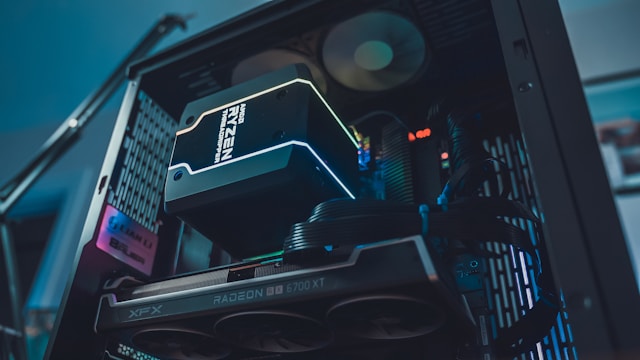Influencer Marketing in India: A Guide to Successful Partnerships

Influencer Marketing in India: A Deep Dive into Finding & Measuring Success
Influencer marketing has exploded globally, and India is no exception. With a massive user base across platforms like Instagram, YouTube, Facebook, and emerging channels like MX TakaTak, the potential for reaching vast audiences through influencer collaborations is undeniable. However, simply throwing money at influencers isn’t enough. Success in Indian influencer marketing requires a strategic approach: identifying the *right* influencers, negotiating effectively, and diligently measuring your return on investment (ROI). This post will explore each of these aspects in detail.
Understanding the Landscape: The Indian Influencer Ecosystem
Before diving into specifics, it’s crucial to understand the nuances of the Indian influencer landscape. It’s far more diverse than a generic “influencer” label suggests. We can broadly categorize influencers based on their follower count and content type:
- Mega-Influencers (1M+ Followers): Primarily focused on brand awareness, these individuals are often celebrities or have celebrity-like status. They’re expensive but offer massive reach.
- Macro-Influencers (100K – 1M Followers): Offer a balance between reach and engagement. Often lifestyle, travel, or fashion-focused.
- Micro-Influencers (10K – 100K Followers): Characterized by high engagement rates within niche communities. Often more affordable than larger influencers. Think fitness enthusiasts, food bloggers specific to a region, or gaming experts.
- Nano-Influencers (Under 10K Followers): These are everyday individuals with a highly engaged following based on their authenticity and relatable content. They’re cost-effective and can generate strong word-of-mouth marketing.
Furthermore, consider the *type* of influencer:
- Lifestyle Influencers: Cover broad topics like fashion, travel, food, and daily life.
- Niche Influencers: Specialize in areas like beauty, gaming, fitness, or technology.
- Regional Influencers: Popular within specific geographic regions, crucial for reaching localized audiences.
Identifying the Right Influencers: Beyond Follower Count
Finding the right influencer is more than just looking at their follower count. Here’s a breakdown of key factors:
- Relevance to Your Brand: This is paramount. The influencer’s content and audience *must* align with your brand values and target demographic. A luxury skincare brand wouldn’t partner with a gaming streamer, for instance.
- Audience Demographics: Don’t just look at the overall follower count; analyze their demographics (age, gender, location, interests). Most platforms provide insights into an influencer’s audience.
- Engagement Rate: A high follower count is useless if engagement is low. Look for a healthy ratio of likes, comments, and shares relative to follower count. A good engagement rate generally falls between 2-5%, but this can vary by platform and niche.
- Authenticity & Trustworthiness: Indian consumers value authenticity. Partner with influencers who are perceived as genuine and trustworthy. Scrutinize their past collaborations – do they promote products they actually use?
- Content Quality: The influencer’s content should be well-produced, visually appealing, and engaging. This reflects on your brand.
- Platform Preference: Where does your target audience spend most of their time? Focus on influencers active on those platforms.
Tools for Finding Influencers: Several tools can help streamline the search:

- Influencer Marketing Platforms: Platforms like Upfluence, AspireIQ, and Klear offer extensive databases of Indian influencers with detailed analytics.
- Social Media Search: Use relevant keywords (e.g., “Indian fashion blogger,” “Delhi food influencer”) on platforms to discover potential collaborators.
- Hashtag Research: Identify popular hashtags within your niche and search for influencers using them.
Negotiating Partnerships: Contracts & Compensation
Once you’ve identified a suitable influencer, negotiation is key. Clearly defined contracts are *essential* to protect both parties.
- Define Scope of Work: Specify the deliverables (e.g., number of posts, stories, reels), platforms, and timelines.
- Content Ownership & Usage Rights: Clarify who owns the content created – you or the influencer? Define how you can reuse it after the campaign.
- Exclusivity Agreements: Consider exclusivity clauses if you want the influencer to avoid promoting competing brands during the campaign period.
- Compensation Models: Several options exist:
- Fixed Fee: A one-time payment for a specific set of deliverables.
- Pay Per Post/Story: Payment based on each individual piece of content created.
- Commission-Based: Influencer earns a commission on sales generated through their unique referral link or code. This aligns incentives and demonstrates ROI.
- Product Gifting: Providing products in exchange for promotion – suitable for smaller brands or nano/micro influencers, but less common with larger influencers.
- Legal Review: Have a legal professional review your contracts to ensure they protect your brand’s interests and comply with Indian advertising regulations (e.g., ASCI guidelines).
Measuring Impact & ROI of Influencer Marketing Campaigns
Measurement is crucial for demonstrating the value of influencer marketing and optimizing future campaigns.
- Track Key Metrics:
- Reach: The number of unique users exposed to the content.
- Impressions: The total number of times the content was displayed.
- Engagement Rate: Likes, comments, shares, and saves.
- Website Traffic: Track traffic driven from influencer links using UTM parameters.
- Conversion Rates: Monitor sales or leads generated through unique referral codes or affiliate links.
- Brand Mentions & Sentiment Analysis: Monitor social media for mentions of your brand and the sentiment surrounding them.
- Tools for Tracking:
- Social Media Analytics Platforms: Utilize built-in analytics on platforms like Instagram, YouTube, and Facebook.
- UTM Parameters: Essential for tracking website traffic from specific campaigns.
- Influencer Marketing Platforms: Many platforms offer integrated analytics dashboards to track campaign performance.
- Attribution Modeling: Understand the customer journey – did an influencer’s content directly lead to a purchase, or was it part of a longer sequence?
The Future of Influencer Marketing in India
Influencer marketing in India is still evolving. Expect to see:
- Increased Regulation: ASCI (Advertising Standards Council of India) guidelines are becoming stricter, demanding greater transparency and disclosure from influencers.
- Rise of Nano & Micro-Influencers: Brands will increasingly leverage the authenticity and high engagement rates of these influencers for targeted campaigns.
- Focus on Long-Term Partnerships: Moving away from one-off campaigns towards building ongoing relationships with key influencers.
- Video Content Dominance: Short-form video platforms like Reels and MX TakaTak will continue to drive influencer marketing trends.
By understanding these nuances, developing a strategic approach, and diligently measuring your results, you can harness the power of influencer marketing to achieve significant growth for your brand in the dynamic Indian market.



